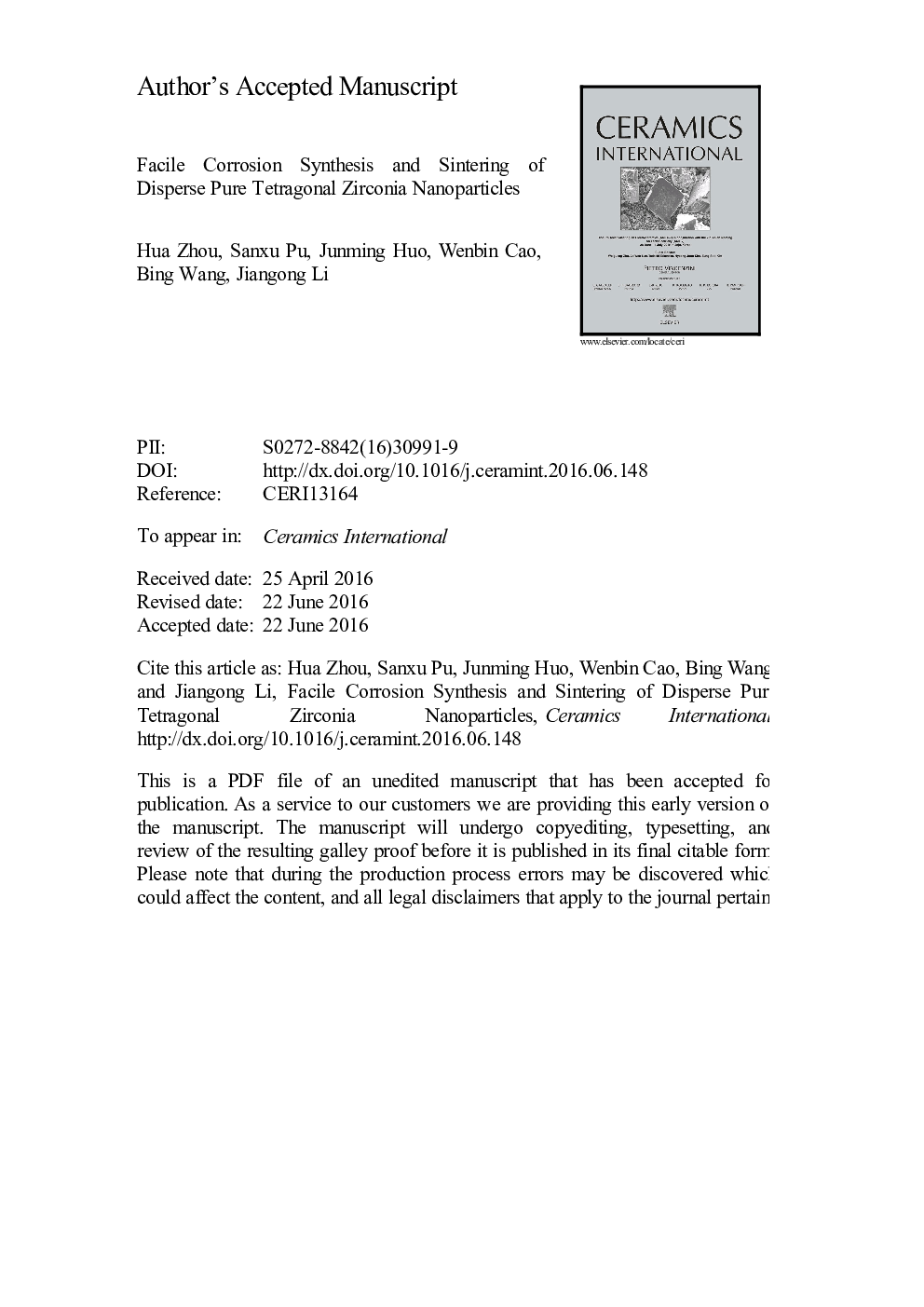| Article ID | Journal | Published Year | Pages | File Type |
|---|---|---|---|---|
| 10624124 | Ceramics International | 2016 | 27 Pages |
Abstract
Disperse pure tetragonal zirconia (t-ZrO2) nanoparticles smaller than 10 nm are essential for preparation of structural and functional zirconia materials, but syntheses of t-ZrO2 nanoparticles using inorganic zirconium salts usually result in severe agglomeration. In this paper, we report a hydrothermal corrosion approach for improving the dispersity of t-ZrO2 nanoparticles synthesized by precipitation using zirconium oxychloride without any surfactants. Disperse pure t-ZrO2 nanoparticles with average sizes of 4.5 and 6 nm and size distributions of 2-11 and 3-12 nm were obtained by calcining precipitates at 400 °C for 2 h and 500 °C for 0.5 h followed by HCl corrosion at 120 °C for 75 h, respectively. Disperse t-ZrO2 nanoparticles with an average size of 6 nm and a size distribution of 3-12 nm were pressed into green compacts at 500 MPa and sintered by two-step sintering (heating to 1150 °C without hold and decreasing to 1000 °C with a 10 h hold). The sintered bodies are dense pure monoclinic ZrO2 nanocrystalline ceramic with a relative density of 99.9% and an average grain size of 110 nm.
Related Topics
Physical Sciences and Engineering
Materials Science
Ceramics and Composites
Authors
Hua Zhou, Sanxu Pu, Junming Huo, Wenbin Cao, Bing Wang, Jiangong Li,
